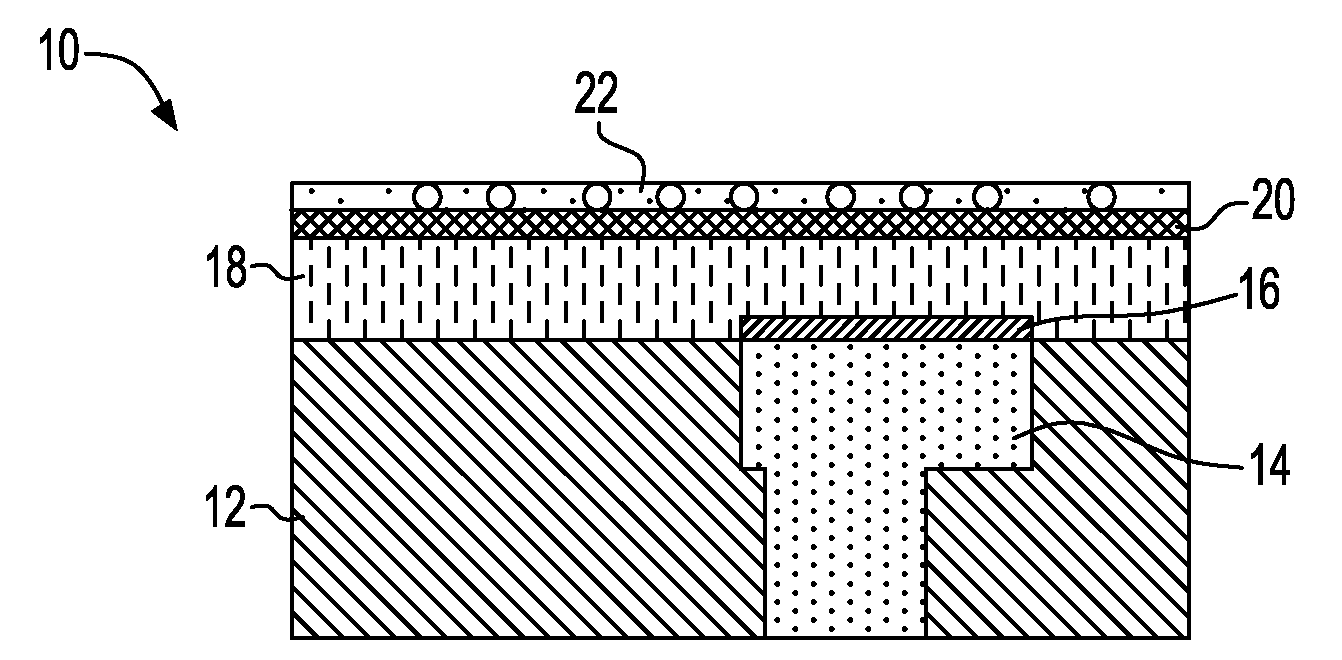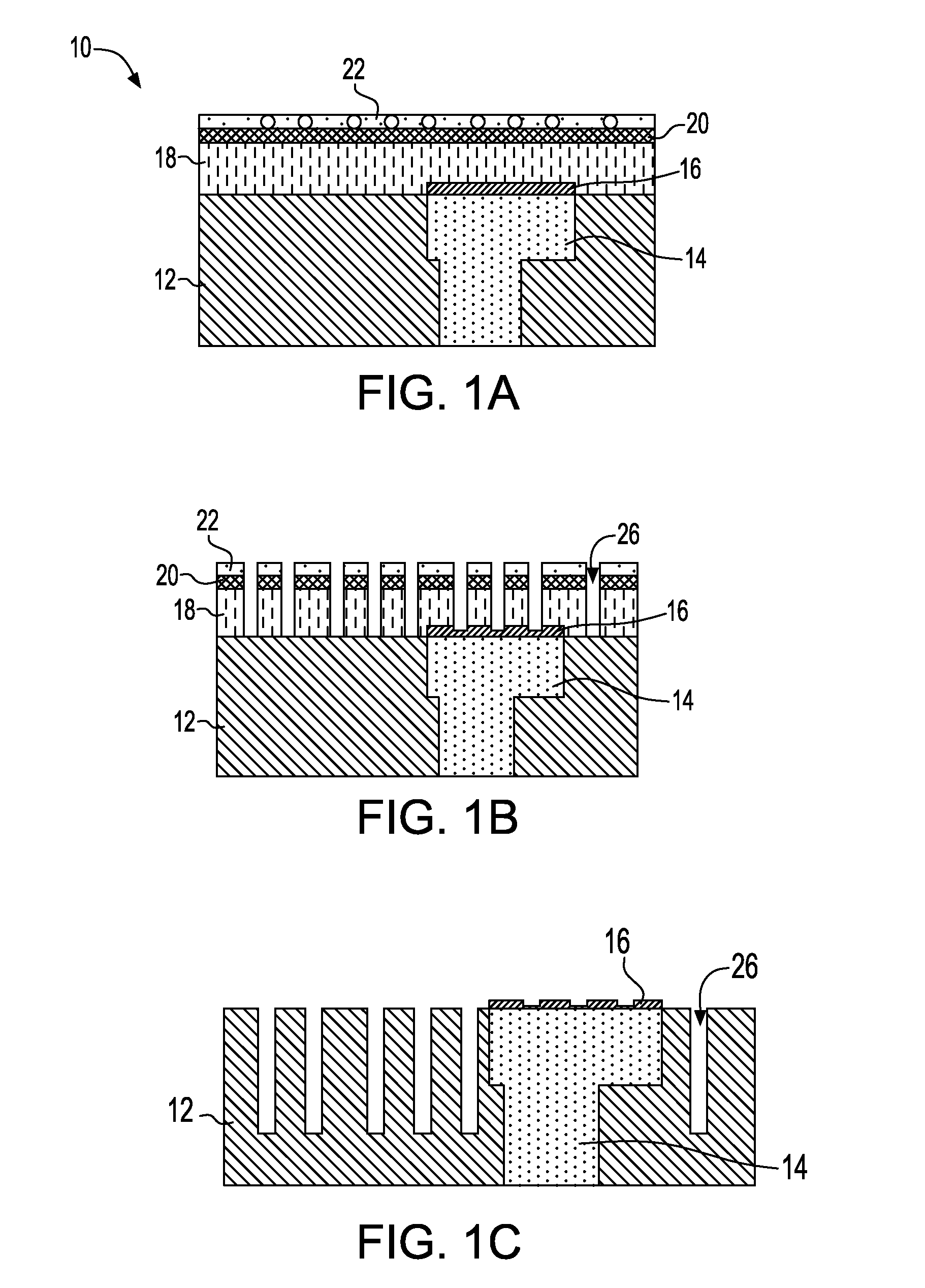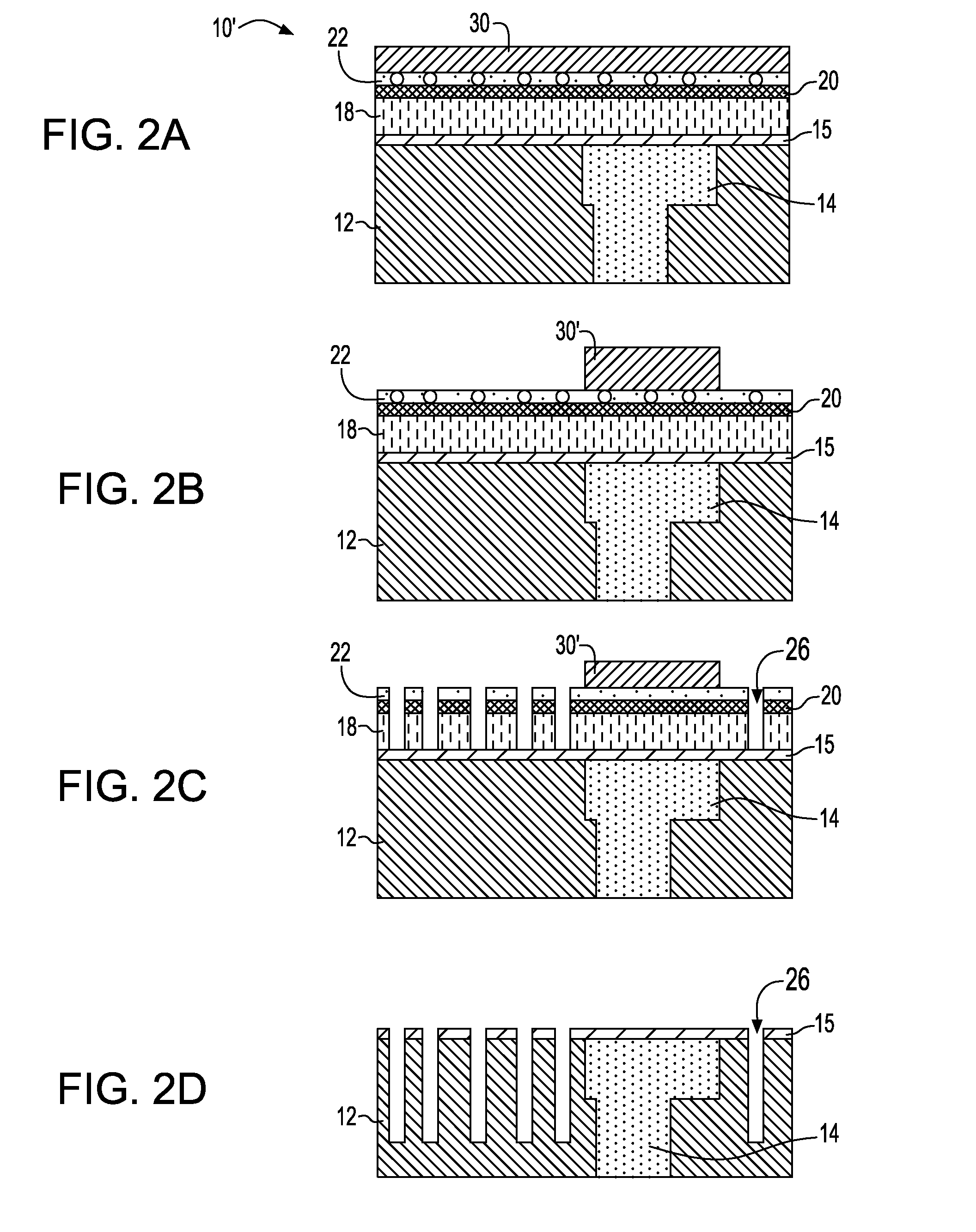Si-CONTAINING POLYMERS FOR NANO-PATTERN DEVICE FABRICATION
- Summary
- Abstract
- Description
- Claims
- Application Information
AI Technical Summary
Benefits of technology
Problems solved by technology
Method used
Image
Examples
example 1
[0057]Synthesis of a Copolymer of Hydroxystyrene and Methacryl-POSS (90 / 10) (Polymer A)
[0058]10 g of methacryl-POSS, 10.52 g hydroxystyrene and 0.64 g AlBN were dissolved in 40 g THF and charged into a 3-neck flask. The flask was purged with N2 for 30 minutes before the temperature was raised to 62° C. The reaction was carried out overnight under N2. On the next day, the solution was precipitated in 2000 ml of water. The solid thus formed was stirred in 500 ml of hexane, then was filtered off and thereafter washed with hexane. The fine powder polymer was collected and dried in vacuum overnight at 40° C. The molecular weight was determined by GPC to be Mw=12.4 K.
example 2
[0059]Synthesis of a Copolymer of Hydroxystyrene and Methacryl-POSS (95 / 5) (Polymer B)
[0060]7.5 g methacryl-POSS, 22.46 g acetoxystyrene and 1.44 g AlBN were dissolved in 120 g THF and charged into a 3-neck flask. The flask was purged with N2 for 30 minutes before the temperature was raised to 60° C. The reaction was carried overnight under N2. On the second day, the solution was precipitated in 2000 ml of water. The polymer was collected and dried in vacuum overnight at 40° C. The molecular weight was determined by GPC to be Mw=8.05 K.
[0061]One the second day, 26 g of the polymer, 240 ml methanol and 30 ml (30%) ammonia hydroxide were added to the flask and the temperature was kept at 62° C. The reaction was carried out overnight in N2. On the third day, the solution remained blur. The solution was rotary evaporated dried to form a solid. The solid thus formed was washed with water, and then mixed in 200 ml THF, 100 ml methanol, and 20 ml of ammonium hydroxide. After overnight unde...
example 3
[0062]Creation of Nano-Scale Patterns with Circular Top Openings on the Polymers
[0063]Polymer A from Example 1 was dissolved in cyclohexanone to form 1.14 wt % and 0.5 wt % polymer solutions. Both solutions were spin coated on Si wafers using a spin speed of 1500 rpm, and then baked on hot plate at 110° C. for 90 sec to give thicknesses of about 35 nm and 20 nm, respectively. Both wafers were subjected to a reactive ion etching process using CF4 as an etchant. The top down SEM images of etched wafers exhibited many circular holes with diameter around 20 nm. The 20 nm thick film exhibited higher density of holes than the 35 nm thick one. The same experiment was carried out on Polymer B obtained from Example 2 with 1 wt % and 0.5 wt % polymer solutions. The results of creating circular holes were very similar to those obtained on Polymer A.
PUM
 Login to View More
Login to View More Abstract
Description
Claims
Application Information
 Login to View More
Login to View More - Generate Ideas
- Intellectual Property
- Life Sciences
- Materials
- Tech Scout
- Unparalleled Data Quality
- Higher Quality Content
- 60% Fewer Hallucinations
Browse by: Latest US Patents, China's latest patents, Technical Efficacy Thesaurus, Application Domain, Technology Topic, Popular Technical Reports.
© 2025 PatSnap. All rights reserved.Legal|Privacy policy|Modern Slavery Act Transparency Statement|Sitemap|About US| Contact US: help@patsnap.com



